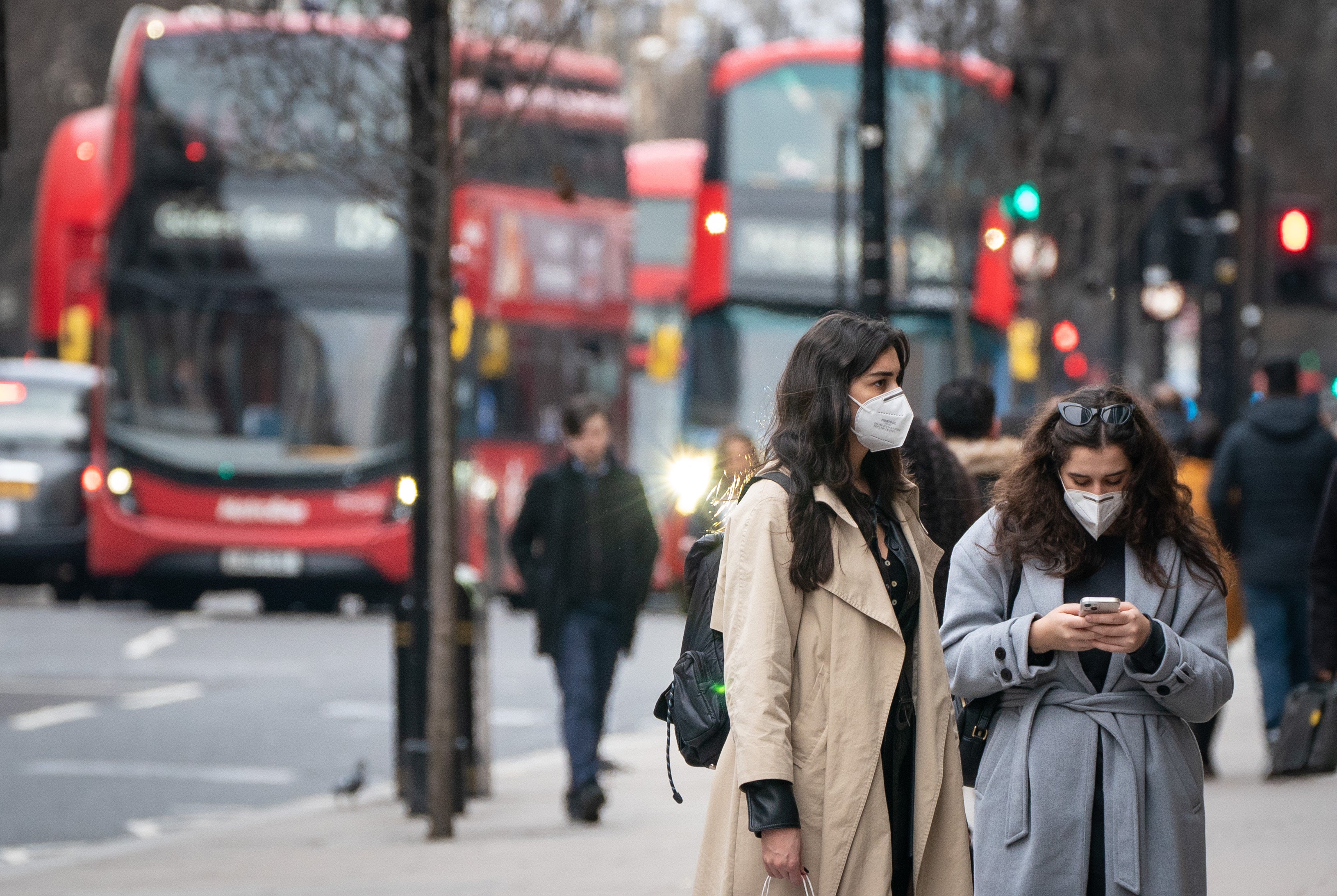Omicron: Are we turning a corner?
The latest figures show a decrease in infections across most parts of the UK and among all age groups apart from younger children.

Your support helps us to tell the story
From reproductive rights to climate change to Big Tech, The Independent is on the ground when the story is developing. Whether it's investigating the financials of Elon Musk's pro-Trump PAC or producing our latest documentary, 'The A Word', which shines a light on the American women fighting for reproductive rights, we know how important it is to parse out the facts from the messaging.
At such a critical moment in US history, we need reporters on the ground. Your donation allows us to keep sending journalists to speak to both sides of the story.
The Independent is trusted by Americans across the entire political spectrum. And unlike many other quality news outlets, we choose not to lock Americans out of our reporting and analysis with paywalls. We believe quality journalism should be available to everyone, paid for by those who can afford it.
Your support makes all the difference.Before Omicron hit, there were signs the UK might be in retreat from coronavirus, with people starting to make tentative plans for the future.
But then the new variant emerged and, with it, more restrictions came.
Now cases are falling, the question on everyone’s lips is: “Have we turned a corner?”
Here are some of your questions answered about the current state of play with Covid-19.
– Has Omicron “peaked”?
Well, if you look at case numbers for the UK, they certainly suggest so.
A total of 94,432 new cases of Covid-19 were reported on January 18, according to Government figures.
The highest number of new cases to be reported on a single day during the current wave was 218,724 on January 4.
But, between those two sets of figures, there has been a key change in UK policy, which means the data needs to be treated with caution.
From January 11, people in England who test positive on lateral flow tests no longer need to get a follow up lab test – also known as a PCR test – to confirm the result.
This means some people will have taken the at-home test and may not have reported the result.
Experts have always cautioned that case numbers don’t make up the whole picture, with hospital admission figures also key.
– So what is this new data and why is it important?
The Office for National Statistics (ONS) Covid-19 Infection Survey examines a random population in the community and whether or not they have symptoms.
This creates a more accurate picture of what’s happening on the ground.
The latest figures show a decrease in infections across most parts of the UK and among all age groups apart from younger children.
But rates are still high, with the latest data suggesting that an estimated one in 20 people across England, Scotland and Northern Ireland had Covid-19 in the week ending January 15.
It is estimated that one in every 25 people in Wales had the virus in the same time frame.
In England alone, it is estimated that 2,984,200 people in England had Covid-19 in the week ending January 15.
– So what is going on in hospitals?
There are 19,450 people in UK hospitals with Covid-19, according to the latest data.
During the second wave of Covid-19, the number of hospital patients peaked at 39,254 on January 18 2021.
There are signs that, in London where Omicron first took hold, hospital admissions are falling, which is another signal the wave has peaked.
While it is true that some of the people in hospital with Covid-19 will have been admitted for another clinical reason and had the virus coincidentally, it is undeniable that the Omicron wave has heaped additional strain on an already stretched health service.
The latest figures show that 44% of patients with coronavirus in hospitals in England were being treated primarily for something else.
– Are all of the people in hospital with Covid seriously ill?
No. If you take a look at the data on the number of Covid-19 patients in hospital who are on mechanical ventilators to help them breathe, you won’t see huge differences between now and August 2021.
The data shows two major peaks in the number of patients on ventilators, which occurred during the first wave, when the virus first came to the UK in spring 2020, and again in January 2021, when at one point more than 4,000 patients were put on a ventilator.
There are still more than 700 patients in the UK with Covid-19 who are on mechanical ventilators.
On Tuesday, Dr Tedros Adhanom Ghebreyesus director general of the World Health Organisation, said: “Omicron may be less severe, on average, but the narrative that it is a mild disease is misleading, hurts the overall response, and costs more lives.”
– Omicron seems to be everywhere at the moment, so isn’t it just better to catch it and build up some natural immunity?
Health officials have strongly warned people not to try and catch Covid-19 on purpose.
As well as increasing the spread of the virus, and increasingly the likelihood it will be passed on to someone more vulnerable, there are also other unknowns, such as the possibility of long Covid.
– So what does all this mean going forward?
The World Health Organisation said the pandemic is “nowhere near over”, but other experts said they hope that, by the end of 2022, we could have a “flu-type” relationship with Covid-19.
This could mean extra steps are taken to protect vulnerable people as the virus ebbs and flows. It remains to be seen what this means exactly, with annual jabs and the enhanced use of antiviral medication both options.
Either way, it is hoped that living alongside the virus will mean a return to normal life with no further restrictions.